How do YOU prepare on race day? There are many established traditions and practices that running coaches and teams prescribe to runners during race-week or even in the final minutes before race start. These can include a large spaghetti dinner (high school or college cross country runners may be very familiar with this classic pre-race “carbo-loading” meal!), warm up drills (leg swings, dynamic stretches, strides, etc.), performing reconnaissance runs/walks on the race course, or listening to pump-up tunes.
There are a wide variety of techniques athletes use to feel prepared before their race, some of which are based in established coaching practices or athletic science, while others may be more individualistic or based on superstitions. If you’ve ever had a lucky pair of socks and you can’t explain why but you need to wear this particular pair of socks for every race, you know exactly what I mean by pre-race rituals based in superstitions.
For this article, I asked trail runners to share their pre-race rituals and superstitions. I also provide some tips to consider before running a trail race of any distance to make sure you are getting the most out of yourself on race day.
Rituals and Superstitions
Camille Herron (Warr Acres, OK) – World Record Holder in the 12, 24 Hour and 100-Mile Distances
“First, I do drills and strides. Then I do the “boxer shakedown” on the starting line! I imagine myself as Rocky Balboa in the corner about to throw twelve rounds of punches. I always crouch on the starting line too. I’ve had the same routine since my freshman year of cross country in 1996.”
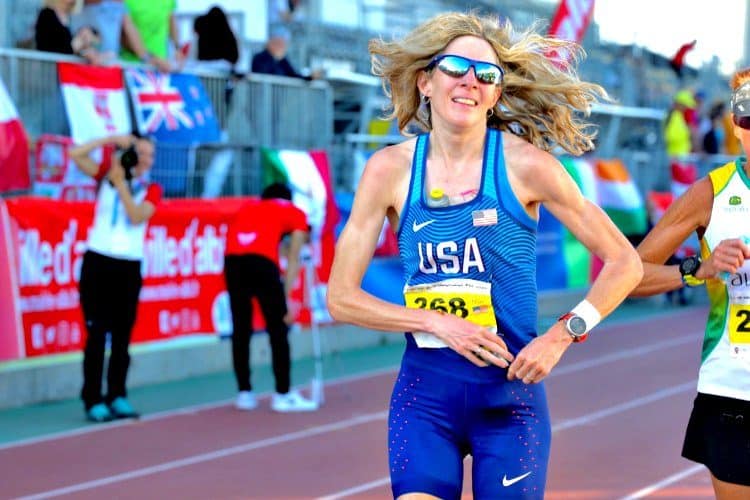
Camille Herron winning the IAU 24 Hour World Championship.
David Mackey (Boulder, CO) – 2011 Ultrarunning Magazine’s Ultrarunner of the Year
“I don’t race as much as I used to, however, I would always eat peanut butter and a banana, washed down with caffeinated coffee with soy milk, and a healthy dose of water, an hour before race time while getting ready. That’s it!”
Sheldon Subith (Hemet, CA) – Accomplished masters’ runner and Native American trail running activist
“I wear the same raven socks. I put the left one on first as I do with my shoes. Using a black sharpie I write the initials and bib number of the runners I want to beat on my left hand. I wear a pouch my oldest son gave me and a watch my youngest son gave me. I have one watch band set on the tenth notch, which is my brother’s lucky number. The other watch is set on the eleventh notch, which was my dad’s favorite number.
I eat a Honey Stinger waffle wafer and have a cup of Armenian coffee. I use the same ice chest, beach towel, backpack and wear a Montrail hoodie that I won long ago. In order to remind myself of my mother and my Armenian heritage, I imagine what my people went through during the Armenian genocide, especially when I find myself in tough times during a race. Last but not least (and the most important part!) is having my wife with me at all of my races. I also always end my gas purchase at 32, my old football number.”
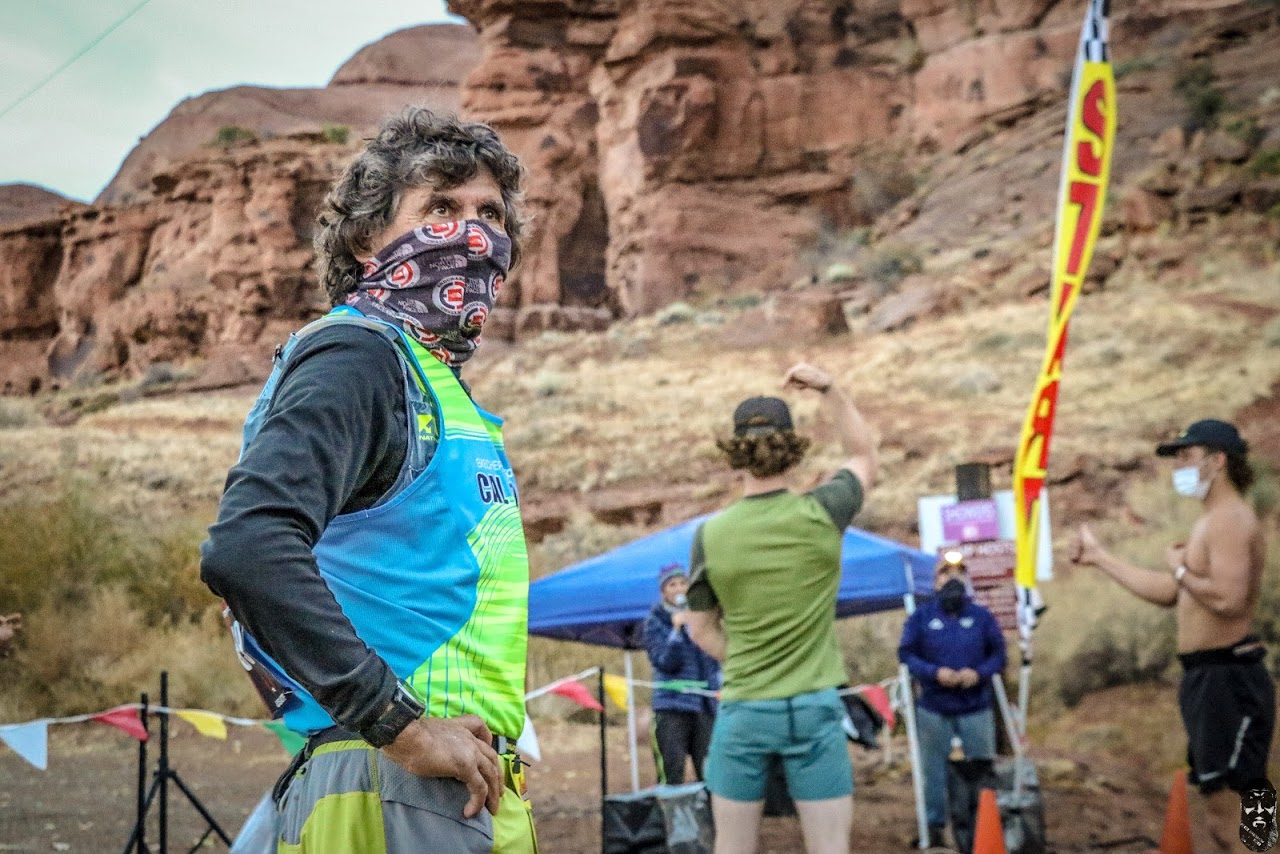
Sheldon Subith
Jack Breezley (Durango, CO) – US Ski Mountaineering National Team and Western Colorado University trail running team member.
“On race morning I try to visualize my race as best I can, almost in a meditative state. This helps me with nerves mostly but also prepares my mind for the mental battle of long races. It also helps me prepare to run my own race, ensure that I don’t go out too fast, reiterate when to eat and drink, etc.
I clip my nails as short as I can, even if I clipped them not long ago. Besides being a bit more comfortable, I’ve done this so regularly it’s become somewhat of a superstition of mine.
Body Artwork! During my skimo season, I had some henna down on my left arm before the two biggest race series of the year. Henna is a paste you apply to your skin that dyes it for a couple weeks. I got mine in a sort of “psychedelic flower pattern.” Besides looking pretty and having fun doing it with friends, I kept telling myself it would “make me faster” as well. If anyone is passing out stuff like glitter or face paint at events I’ll be sure to apply some. Recently my teammate and I put some huge glitter strips on our cheeks before our last skimo race of the season which happened to be my hardest race yet.
Finally, as with all of my adventures in the outdoors, including races, I usually ask the mountains (or desert or wherever I am) for safe passage and travels. Afterwards, I thank the mountains for granting me safe travels or for a great day out on the trails. This usually is just in the form of me talking to the surrounding scenes of nature.”
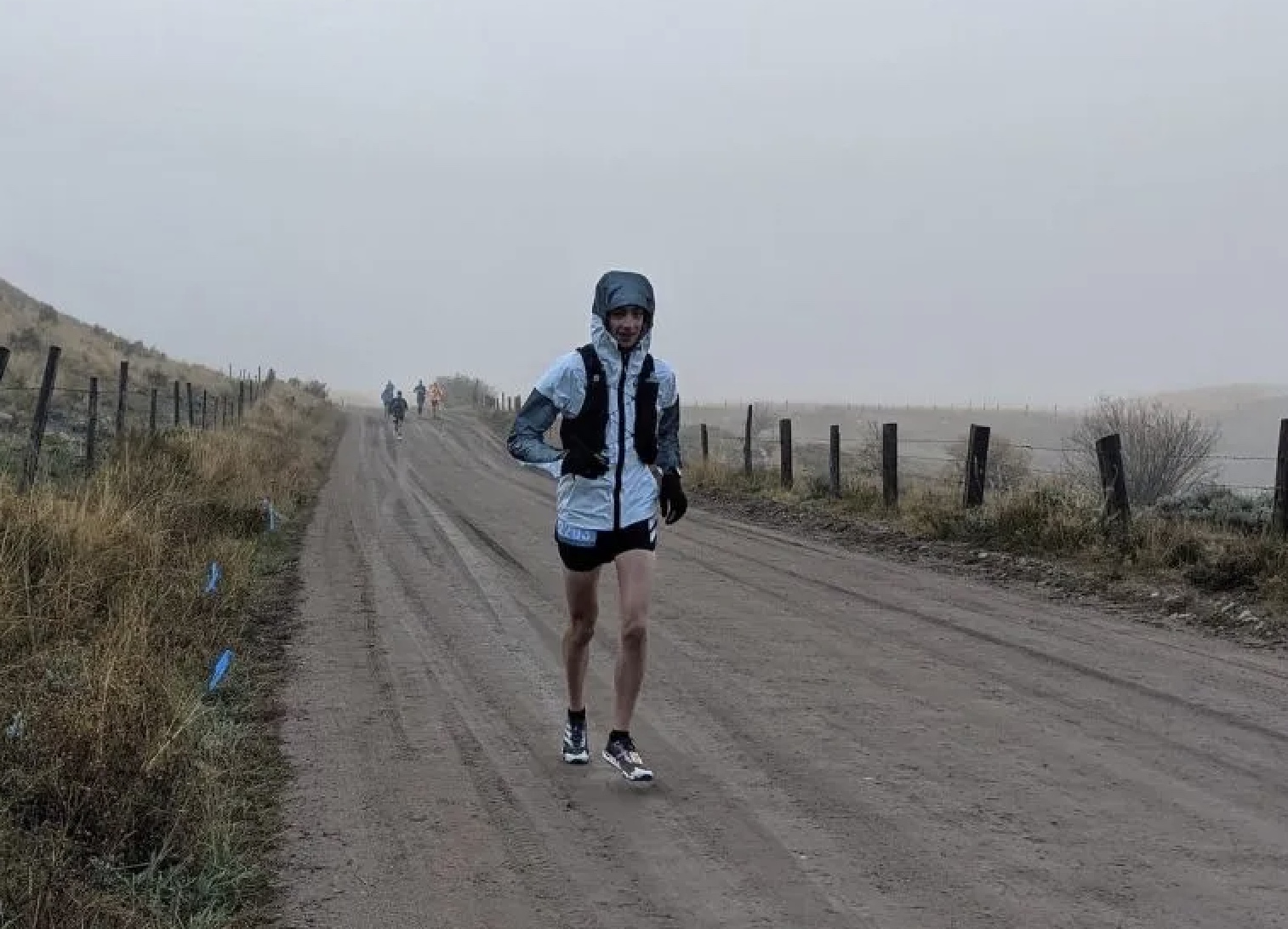
Jack Breezley
Max King (Bend, OR) – 2011 World Mountain Running Champion and 2022 Mount Marathon champion.
“I’ve had various superstitions over the years and most of them were during high school and college and have moved on at this point in my career but a few still linger.
In college, I used to have the pre-race ritual of waking up four hours before a race (no matter how early it was), getting a quarter mile jog in, and eating a bagel and drinking water. I used to perform well but was so hungry right around race time. I don’t do that any more.
While I’m not so strict on my wake up time or eating time anymore, I have eaten a Picky Bar (or two) before every race for probably the past ten years. It’s been a go-to breakfast that works. They sit well and one will fill me up pretty good for a shorter race.
I also have a pre-race stretching routine that I’ve used since before college that hasn’t varied much over the years. You can see that on my Instagram Reels too. Jog, active-isolated stretching, dynamic stretching, drills, and it’s time to race.
For track races I used to take my singlet and wear it around my neck like a cape for my strides. I didn’t want to put it on and warm up with it cuz I liked it fresh for my race.”
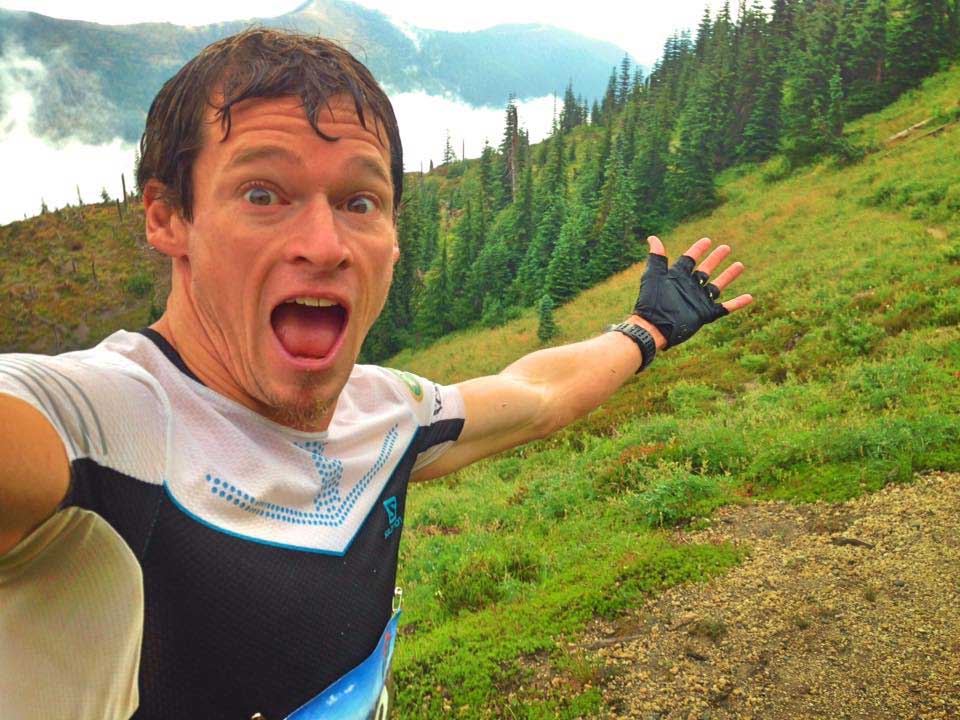
Max King
Zach Friedley (Mendocino, CA) – Accomplished adaptive athlete and activist sponsored by On Running and Go Sleeves
“The meal I like to have before any big race is ground chicken with fresh vegetables, couscous and humanely raised chicken eggs with sparkling water. I like to get to bed fairly early. I meditate leading up to the race and the morning of. I like to remind myself and be grateful for how I’m capable and privileged to be there at the race. I do gratitude exercises mixed with meditation that I learned in India. I try to become as calm as I can and try to get my heart rate down into the thirties the morning of the race. That’s when I know I’m ready. I put my leg on and make sure I have a good seal, which I do every morning. Meditation is key so I am in a good headspace and feel ready to go and endure the challenging moments to come.”
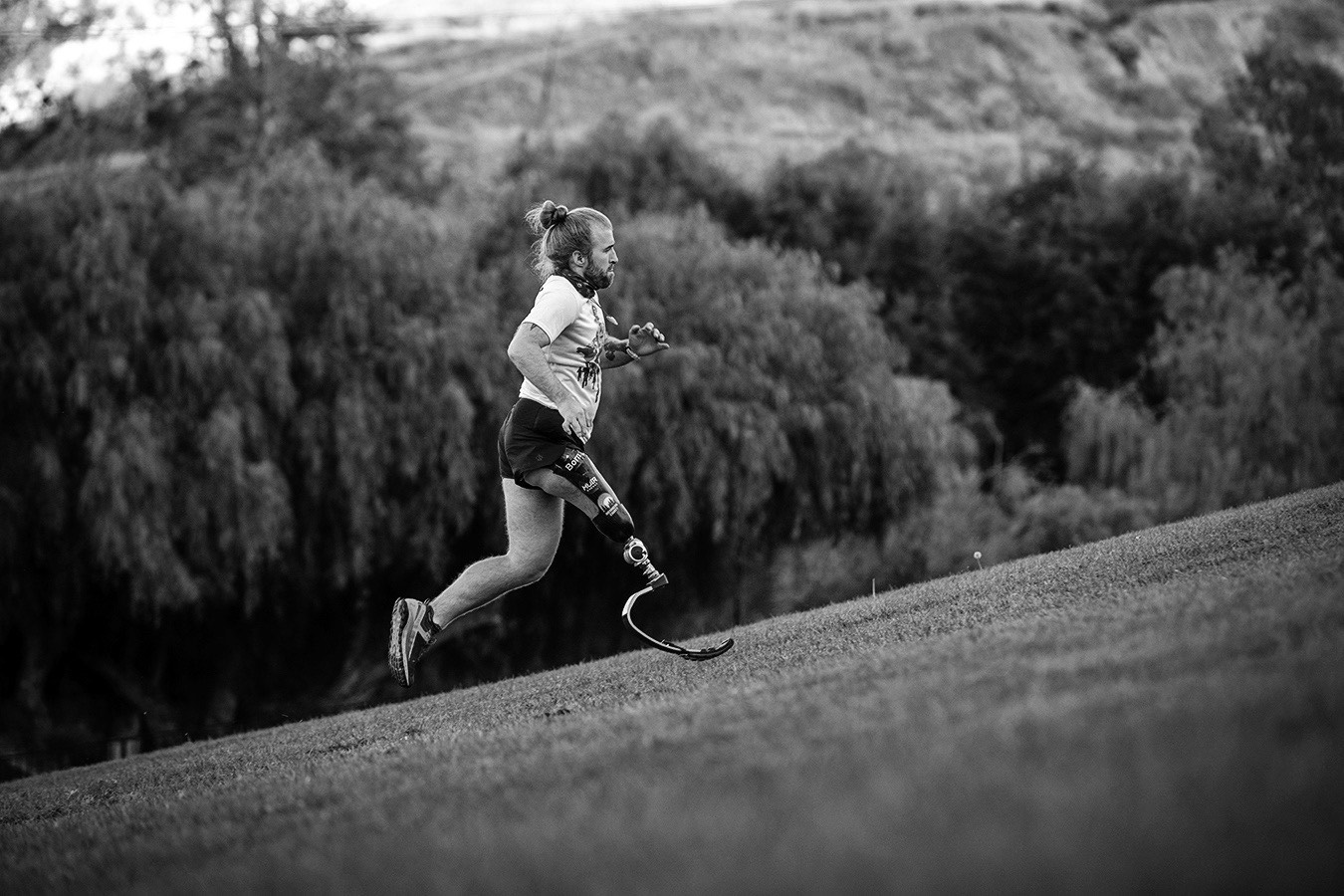
Zachary Friedley
Pre-Race Tips
Longer Distance, Shorter Warm-Up…Shorter Race, Longer Warm-Up
As a general rule of thumb, the longer the race distance, the shorter your warm-up should be. Vice versa, the shorter the race distance, the longer the warm-up should be. With longer events, such as ultramarathons including the Leadville Trail 100 or Cocodona 250 (Read our 2022 race recap here), the starting pace is typically slow enough that your muscles can warm-up in the first several miles of the event. It may be beneficial to perform a few running mobility exercises, but there is no need to go for a several mile warm-up jog or perform strides. In contrast, shorter races typically involve faster speeds and more intense impact forces, which requires your muscles to be warm and engaged. Failing to warm-up properly before an intense activity increases the risk of injury or going into oxygen or energy debt within the first few miles of the race. Similarly, races at altitude or races that begin with steep uphills or downhills should have longer, more thorough warm-ups because of the additional stress these challenges place on the body.
The Hard Work Is Done
Many runners make the classic mistake of doing too much on race day or in the days leading up to it to gain an edge. This is similar to college students “cramming” the night before an important test. Cramming doesn’t work for a test and not for races either! By race week, the work of your training is “in the legs” and few improvements in fitness can be gained. Runners might think they need one last hill workout to feel prepared for a particular climb on course, one intense stretching routine to gain extra mobility or some new nutrition supplement to give their body extra energy. Your training in the weeks and months leading up to race day is ultimately what will dictate how you perform on race day. Cramming does nothing but over-stress the mind and body, which does more harm than good. A race-specific and consistent training routine is most important to race success.
Stand By What Works
Don’t stray too far from your normal training habits during race week and race day. Keeping your daily habits and training practices the same on race week will help your mind and body feel prepared to do what it is trained to do and avoid things that could be detrimental to your race. Minimize first-time experiences on race week, such as racing in a pair of shoes you’ve never worn, eating a meal you’ve never eaten or trying new in-race nutrition products such as gels or electrolyte drinks. Many runners make the mistake of wearing a new pair of shoes because they are supposed to be “fast” shoes and end up with blisters or hot spots during their race. No magic shoe will drastically improve your trail racing performance. You might want to invest in separate shoes for “racing” and “training,” but you also need to make sure you’ve run enough in your racing shoes to know how your body responds to them. Similarly, many coaches prescribe “tapering” during race week, or lowering your training volume to allow your body to feel fresh on race day. Although tapering can be very effective, you should make sure not to overdo tapering or you will feel tired and stiff from not running enough when your body is accustomed to a certain training load. Rely on your coach’s expertise and your own experience with tapering to determine the right amount for you. Overall, stand by the practices that you feel have been keys to your success in training and apply these same principles on race day.
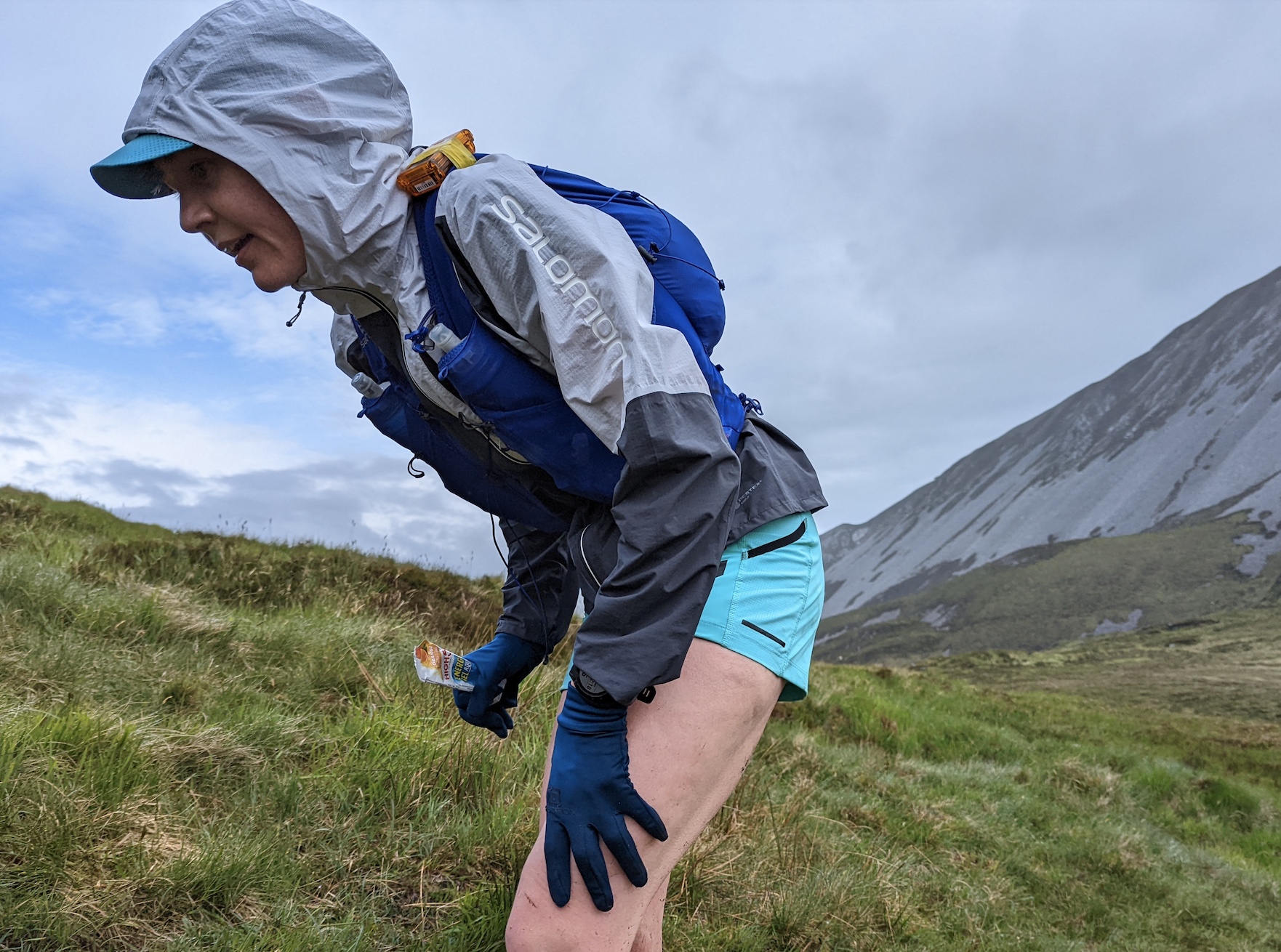
Get Geared Up
Get Geared Up
Trail races require more gear preparation than most other types of running events. Trail races, particularly ultramarathon distances, might require runners to carry a particular amount of fluid, calories, running vest, trekking poles, etc. Mountainous races in remote areas might require runners to carry at all times rain/snow gear, tracking devices or other safety equipment. Weather can also change quickly in mountains, so it’s a good idea to bring clothes for any condition for races in mountains (even in summertime!). I recommend laying out all of your gear for before, during and after the race on the floor or your bed the day before the race. Analyze your choices in gear and nutrition and make sure you have everything you need, while considering the weight of these items and how you will carry them. Consider what aid stations will provide on race day and factor these items into your decision of what to carry with you and what you can pick up along the way. Additionally, if you are racing a longer event where you have a crew, make sure your crew has all the gear and products they need or will provide you with along the race course. Check out my in-depth article on how to crew trail runners.
Know Where You’re Going
Most trail races are well marked with flagging, cones, ribbons, etc., but there is always the chance of going off course or getting lost in the woods. Trail running is not the same as track running where you need only to run around an oval! Exercise your route finding skills on race day (which may become increasingly difficult as your mind and body fatigue throughout the race) and do your best to know as much as you can about the course beforehand. Study the junctions in the trail, major landmarks and if you are particularly worried about getting lost you should speak with the race director about what measures they are taking to keep runners on course. It can also be a good idea to scout the course in the days before the race. Some events have GPX files you can download to your watch or phone. With these files you can follow the exact route before or during the race without having to worry about looking for physical course markings.
Focus On Your Race Goals
As race day approaches, it can be easy to let nerves take over. Doubts or uncertainties may creep into your mind and it’s essential that you remain calm and focused on why you are at this race in the first place. What are your race goals and intentions for being at this event? This can be as simple as having fun, enjoying being a part of fun trail running communities, running a certain time or winning an age-group/overall category. Remind yourself why you are there and don’t let distractions or nerves derail your intentions. Running with clear intentions is the most important mental strategy you can have to get you through the tough or unexpected moments you will encounter in the race.
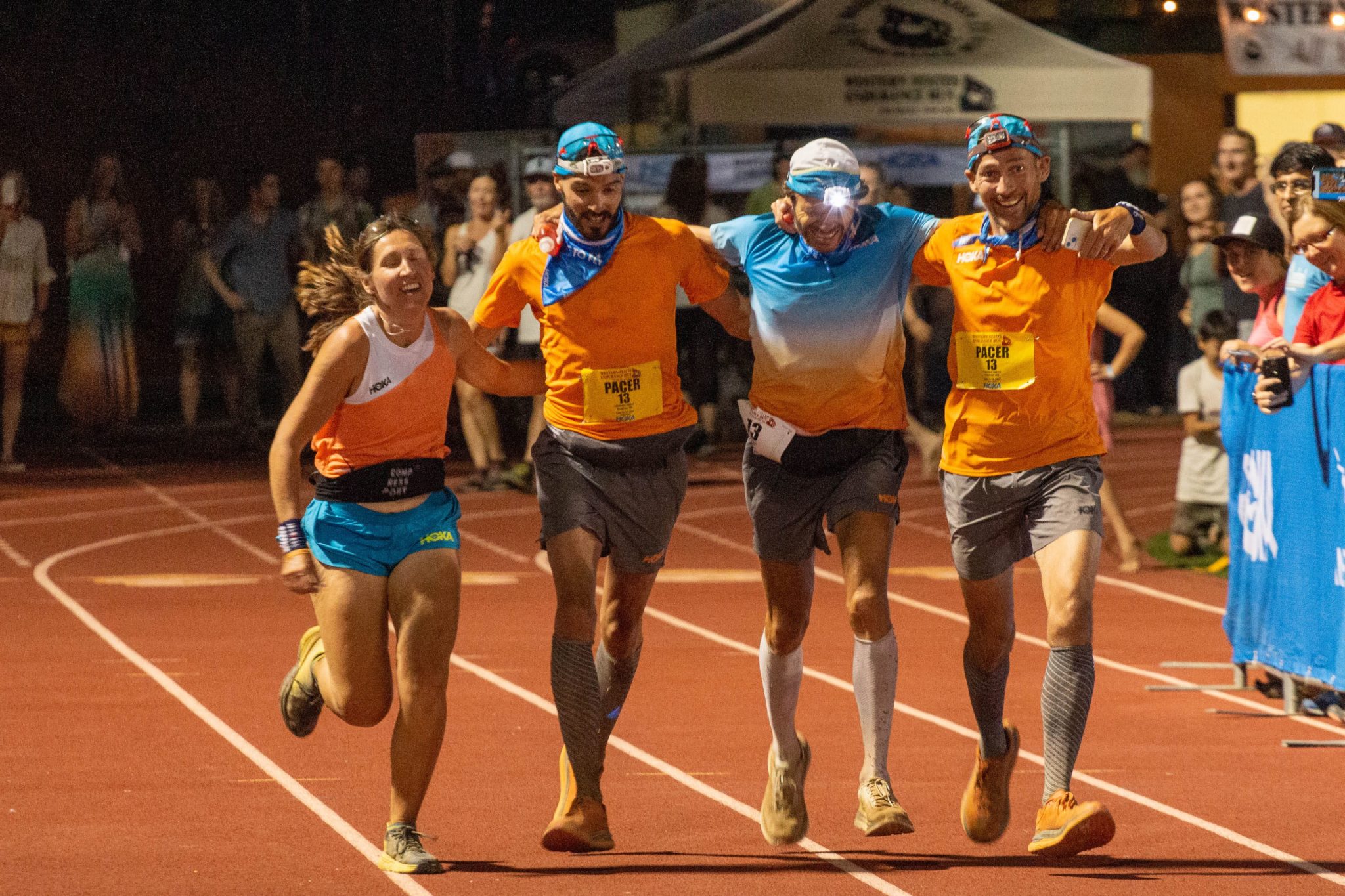
Western States 100 Mile finish
The post Trail Runners’ Pre-Race Rituals and Superstitions appeared first on ATRA.

